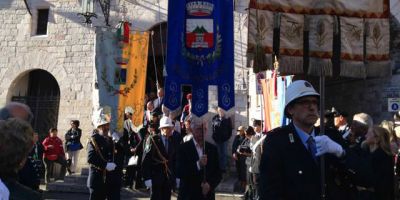Il 4 ottobre si celebra la festa di San Francesco, il ‘poverello di Assisi’ e santo tra i più amati e venerati in tutto il mondo e che nel 1939 venne proclamato Patrono d’Italia da Papa Pio XII. Da allora ogni anno una regione diversa – che rappresenta l’intera Nazione- si reca in pellegrinaggio ad Assisi offrendo in dono l’olio per alimentare la lampada che arde giorno e notte presso la sua tomba custodita nella cripta della Basilica papale a lui dedicata. Questo gesto simbolico porta in sé un significato profondo: rappresenta un omaggio alla perenne luminosità dei valori che san Francesco ha fatto suoi. I festeggiamenti ad Assisi iniziano sin dal 3 ottobre con manifestazioni civili e religiose e continuano durante la giornata successiva con un Corteo Civile alla presenza di autorità politiche e le delegazioni della regione. Meta del Corteo è la basilica di San Francesco dove, come di consueto, ha luogo la celebrazione solenne che comprende anche spettacoli di danze e canti popolari in costumi tradizionali.
Francisco di Assisi. The patron saint of all of Italy. His feast day is celebrated in his hometown of Assisi on October 4 (the day after his death, Oct 3, 1226, as he died at day’s end).
In many ways, Italy is still a collection of medieval city-states, lacking a strong nationalistic sense. But all unite to honor the nation’s beloved San Francesco on his day. Commemorating one of the most beloved saints in the world who left everything to marry “Lady Poverty” and to live in imitation of Christ, the feast day brings all of Italy together.
Each year, one of 20 regions of Italy brings the oil which will burn in front of his tomb. In 2016, the Piedmont region held the honor. The mayor of Turin joined the mayor of Assisi to lead the procession to his Tomb in the Basilica di San Francesco, Assisi’s trumpeters in medieval garb blaring out the festival’s start on the steps of our elegant 14th-century city hall.
The medieval children’s drum corps of Assisi in elegant red medieval tunics, with scarves of the Assisi colors, blue and red, proudly beat out their greeting to San Francesco. The children’s medieval banner-wavers swished and swooped colorful banners as their greeting to visitors. For the first time ever, all the Assisi school children joined the procession, the older ones holding high the olive branches of peace intertwined with blue and red ribbons. The younger children followed, proudly holding high their artwork: colorful cutouts of all the elements of San Francesco’s “Canticle of the Creatures,” the first poem in the Italian vulgate (1225 – 1226).
After the children’s Canticle representation, another first for this Festa di San Francesco: two women mayors led the procession to the Tomba di San Francesco, following the regal royal blue and red banner of Assisi, flanked by our policemen. Right behind Assisi’s mayor, Stefania, and Turin’s mayor, Chiara, mayors of Piedmontese towns in red, green and white sashes walked in front of their elegant, richly-embroidered city banners, proudly born by local policemen. Friars and sisters followed and then the populace joined the procession to the Tomb of St. Francis. All united in honoring their patron saint, San Francesco, and all feeling, for a day, at least, italiani.
https://www.lagazzettaitaliana.com/history-culture/8913-italy-unites-for-assisi-s-feast-of-st-francis#sigProId07b41feb2c




